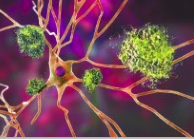Author: DynamicBrain Inc.
Publication: Monthly Newsletter
Published Date: August 19, 2021
We can improve our brain health with small changes in our daily routines. One of the common activities I’ve heard Dr. Merzenich express concern about is listening to music while working out. As Dr. Merzenich puts it:
“Movement control is all about your brain interpreting those immediate feelings along with those products of sensory feedback translated by your vision and your kinesthesia, coming back from your body. “Senseless” exercising is good for your strength and vitality and is known to help get more blood and oxygen to the brain; still, for exercising your brain as the controller of your movements, it’s largely a waste.“
Don’t forget your BrainHQ training today, and, if you still don’t have full access, join now.

Kind regards, Frieda Fanni
President
DynamicBrain Inc.
DynamicBrain Inc. is the Canadian partner of Posit Science Corporation providing brain fitness program BrainHQ in English and French.
|
 |
 Regulating Alzheimer’s plaques
Regulating Alzheimer’s plaques
A team of scientists have looked into what regulates a specific Alzheimer’s-associated protein. They used an advanced microscopy technique called super-resolution imaging to “see” how the production of the protein is tightly regulated. Interestingly, the regulator is needed for setting a proper threshold for both the Alzheimer’s-associated protein and normal cognition, so you can’t simply eliminate it.
Find out more about what this means
here.
 Learning about anxiety from the youngest among us
Learning about anxiety from the youngest among us
An exceptional study has looked into the question of whether one-month-old babies can teach us about the brain mechanisms underlying anxiety. Earlier studies have shown that specific brain circuits in older children and adults with anxiety disorders have a strong response to certain stimuli compared to individuals without anxiety. Researchers set out to see whether these same brain regions have a strong response in one-month-old babies who may be at risk for anxiety disorders because of genetic predisposition and environmental influences.
Learn what they discovered
here.
 Aging in the Amazon
Aging in the Amazon
An international study has shown that the Tsimane, an Indigenous people of the Bolivian Amazon, have significantly less brain atrophy than their aging peers in the US and Europe. Brain atrophy is when brain cells and the connections between them break down. A certain degree of brain atrophy is normal in aging. With aging-associated atrophy, the brain’s volume decreases. In the Tsimane, this atrophy is approximately 70% lower than in adults in the US and Europe!
Read about the Tsimane and their secret to aging
here.